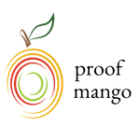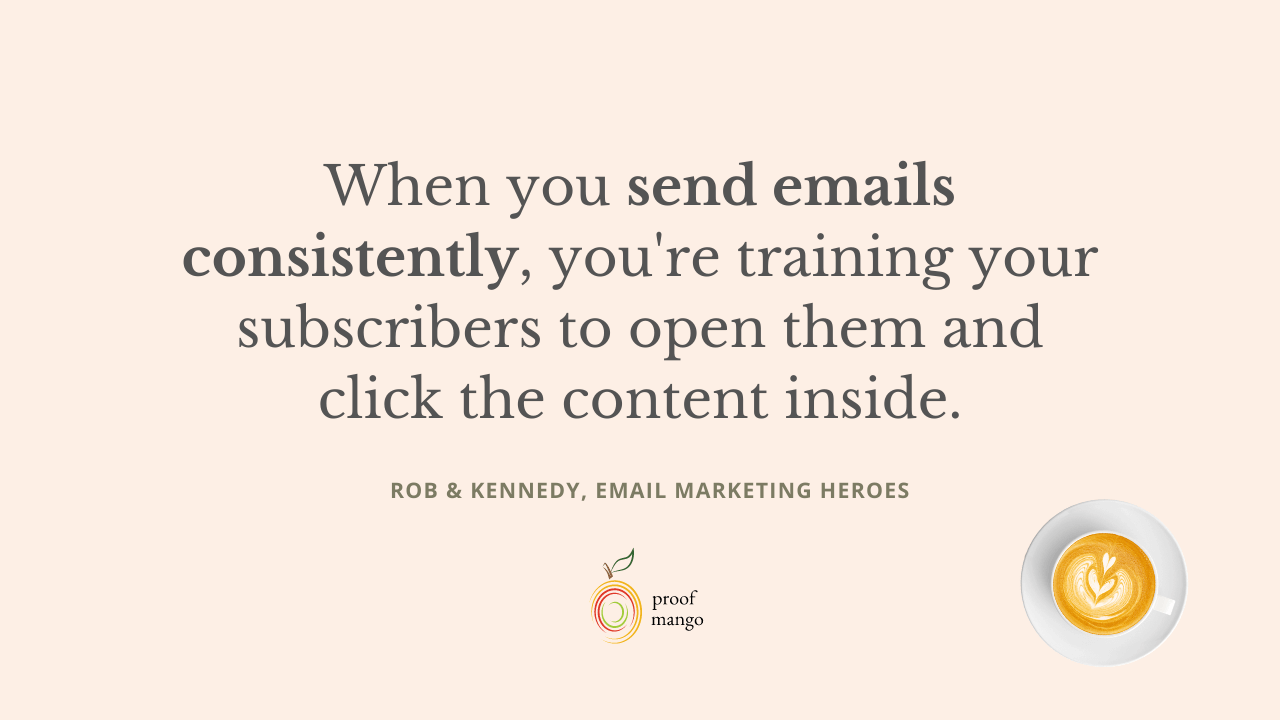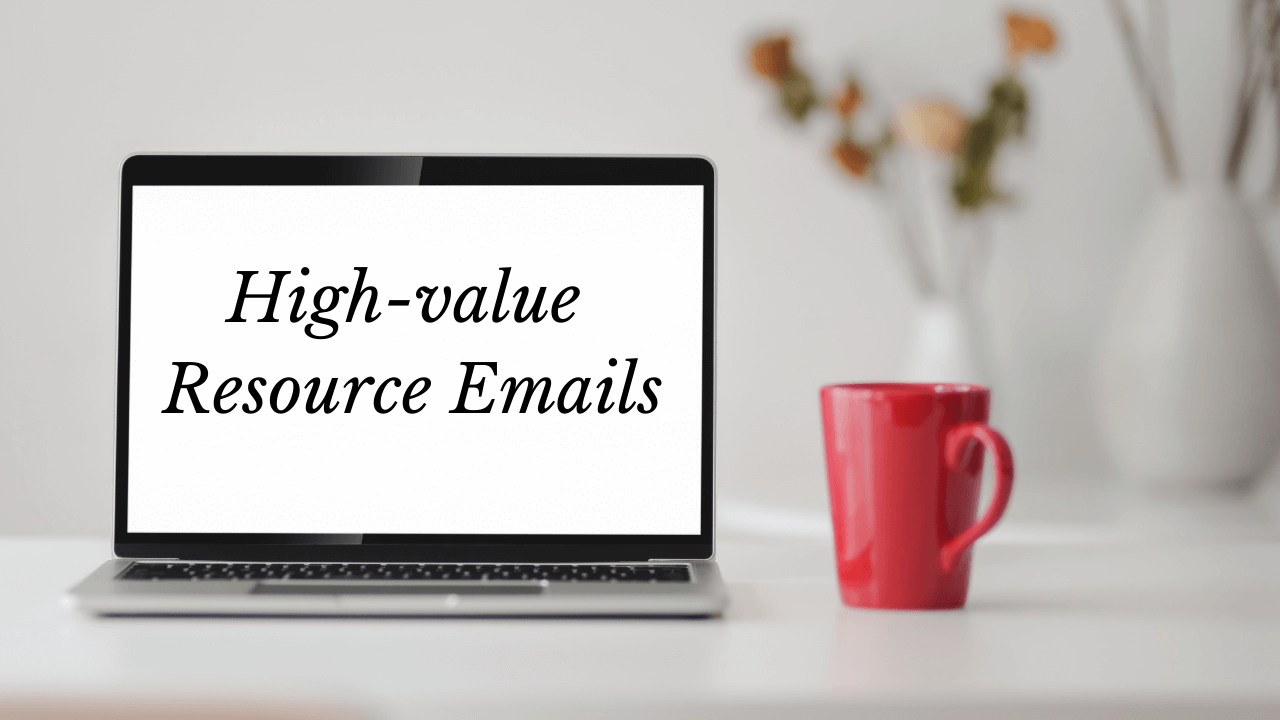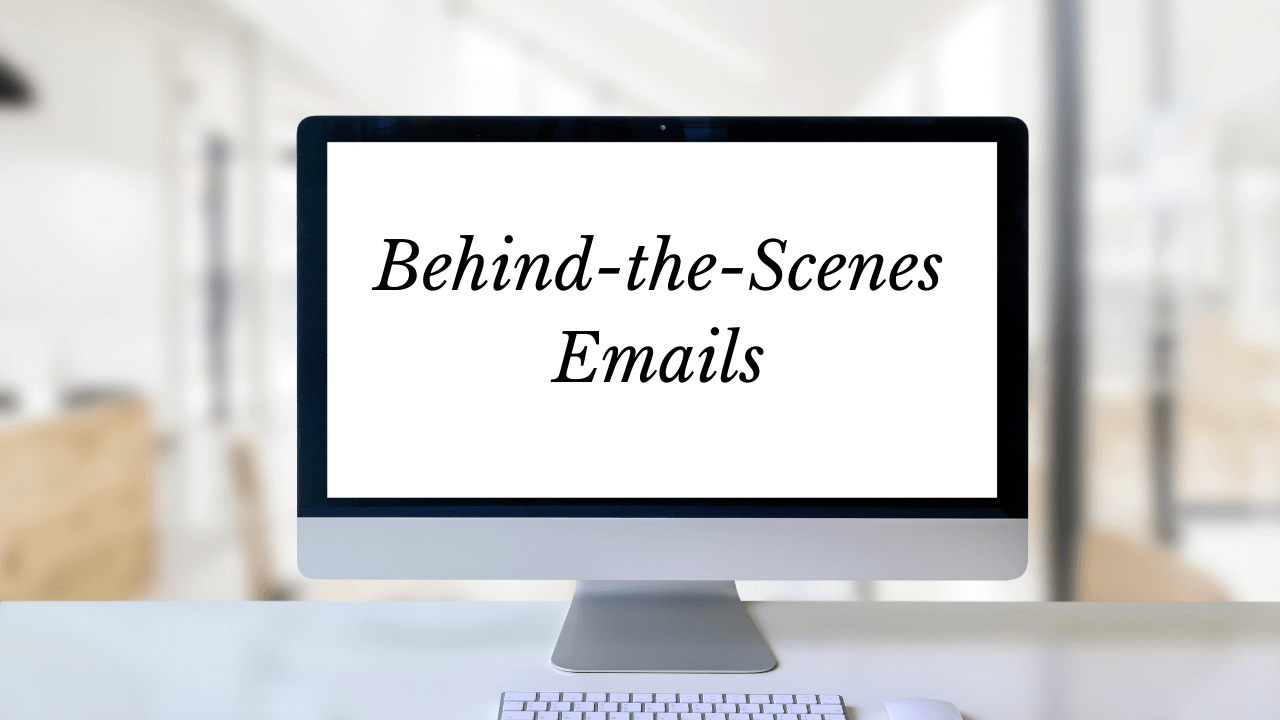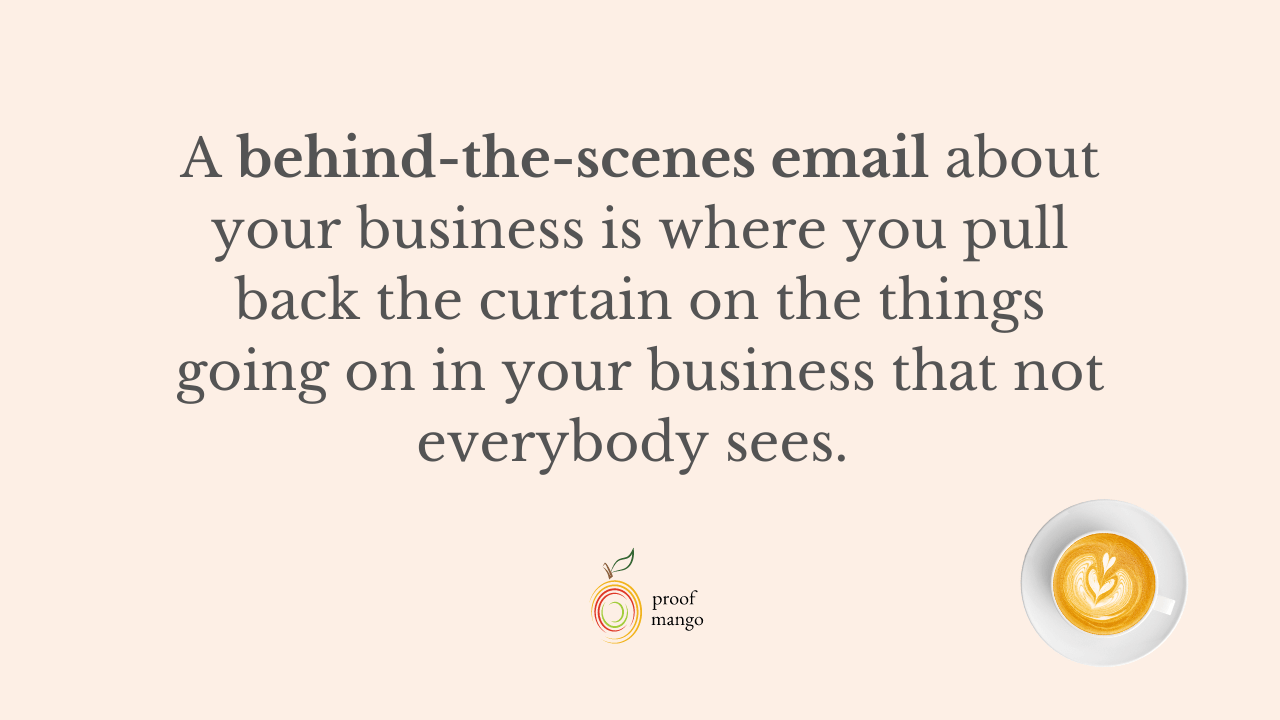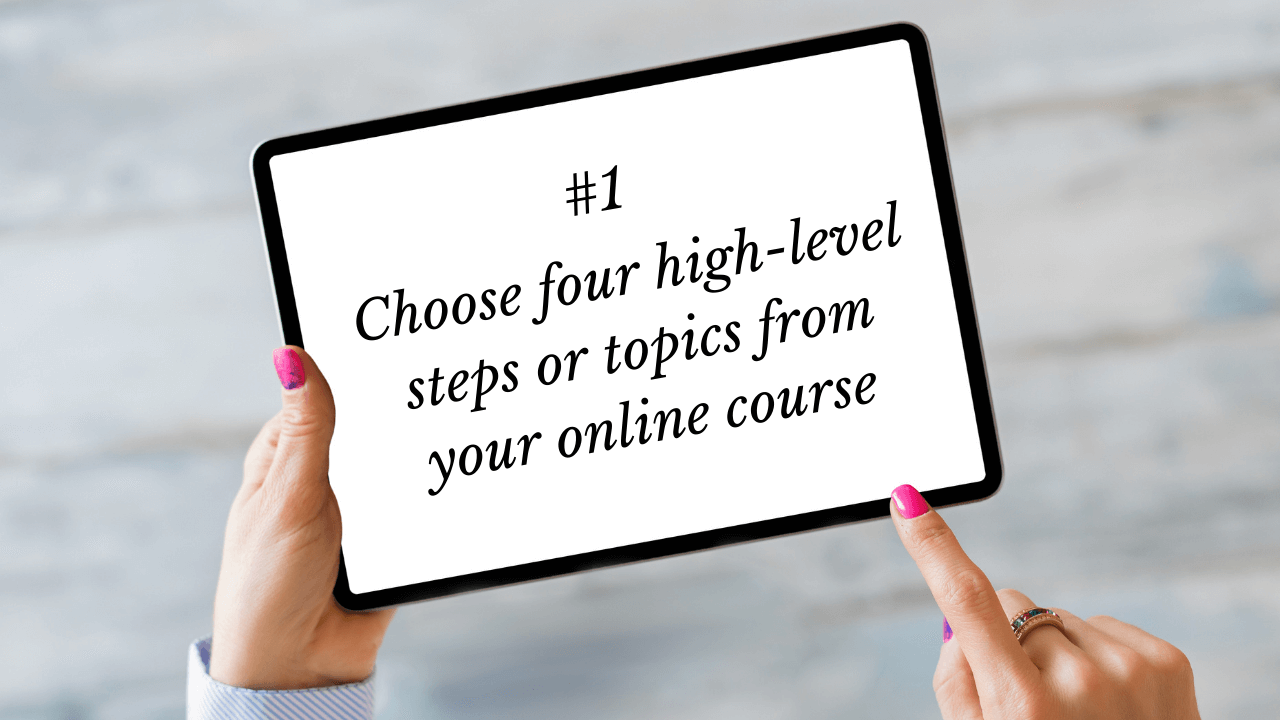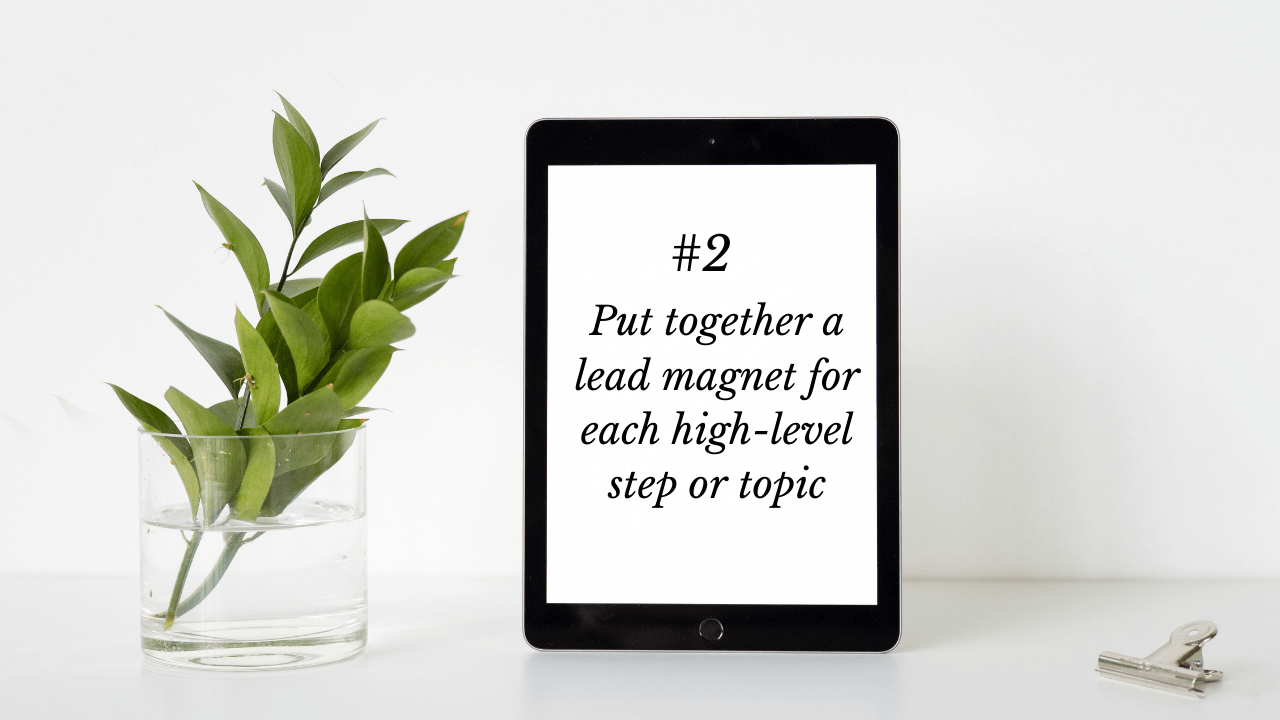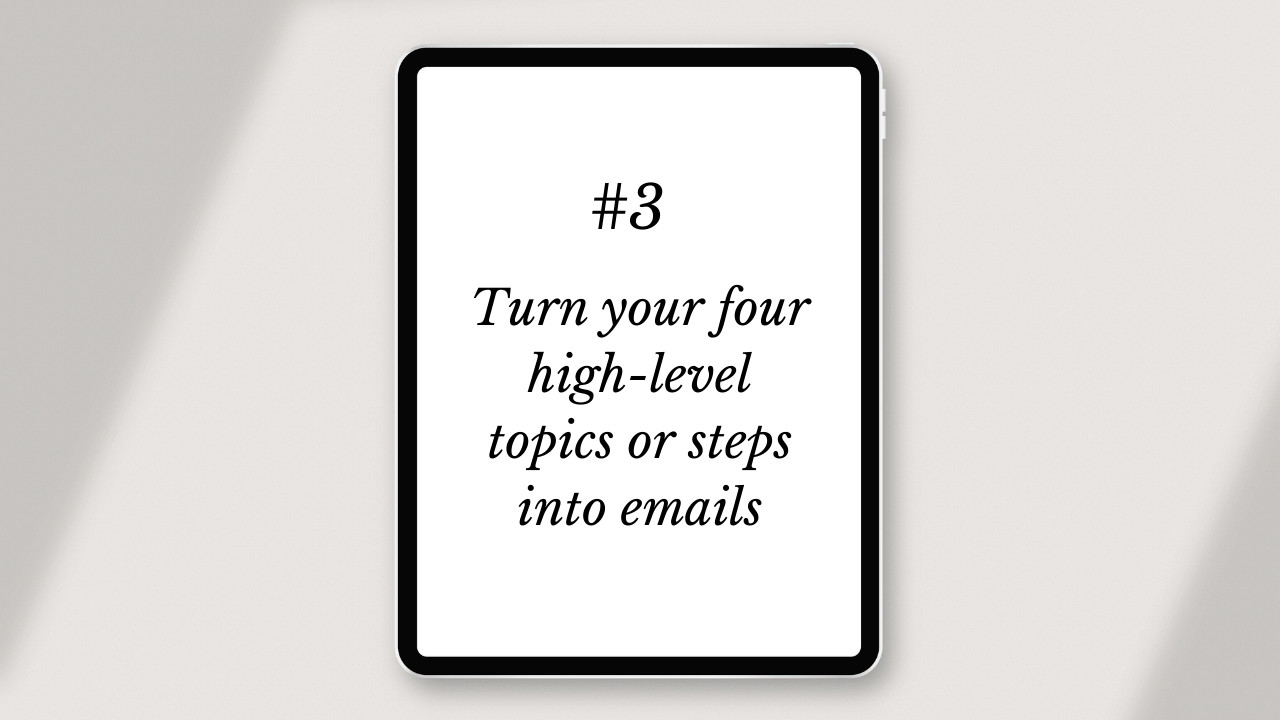Launching a course and making sales is less stressful when you send the right emails to warm up your subscribers 1-3 months before launching.
Would you buy a movie ticket for a movie you knew nothing about?
Probably not, and marketers know this.
So they slap new movies on billboards everywhere and interview the movie stars on your favorite shows to give you a taste of the movie.
This is what it’s like to warm up your subscribers — you give them a taste of what you're selling so they want the whole thing.
Let's talk about how to warm up your email subscribers before launching a course.
How to Warm Up Subscribers Before Launching a Course
Launching a course requires a good course launch strategy. In this post, we’re talking about how to use email at the beginning of your course launch to warm up your email subscribers to eventually sell more courses.
To do this, send your email subscribers 1-2 weekly emails that provide value, introduce you, and showcase your expertise.
But the emails you send will look different depending on whether you're 3+ months out from your course launch or 1 month out.
I've broken down how to warm up your email subscribers for both scenarios below.
Types of Emails to Send When Launching a Course in 3+ Months
If you're 3+ months away from launching a course, you’re not necessarily promoting it yet.
But you’re promoting the idea that you are a trustworthy person who gives value. This is called nurturing your leads (subscribers).
So at this stage, you need to write high-value emails infused with story and chock-full of your personality.
Rob and Kennedy of Email Marketing Heroes say that when you send emails with value (infused with story) on a consistent basis, you’re training your subscribers to open your emails and click the content inside of them.
So we want to mimic this idea and provide a huge amount of value to our list and connect with our audience until we’re ready to promote.
Three months before your launch, this should be your goal.
Here are two types of lead-nurturing emails to send when you’re 3+ months away from launching a course:
- High-value resource emails
- Behind-the-scenes emails
Let’s talk about each one.
High-Value Resource Emails
To prove you’re trustworthy before launching a course, you’ve got to give your email subscribers value they can take action on.
I’m talking the kind of value they can DO something with and get a result as soon as they’re done reading your email.
No theory or fluff.
One way to do this is to share a high-value resource email. This type of email shares your go-to resources in business, finance, operations, life, etc.
Resources are what everyone needs.
Believe it or not, every audience WANTS resources to help them solve the big problem in your niche. So no matter what your industry is, you've got resources to share that will help. A high-value resource email can work for you.
To start, create an email around the resources that help you do what you do.
Got five tools you couldn’t live without? Share those.
What about books or courses that helped you get to where you are today? Share those.
Are there websites, podcasts, or social media profiles you find routinely helpful? Share those.
The people reading your emails want help. Send them an email with the best resources you’ve come across and give them a basic action step that will let them use the tool or resource you’re suggesting.
This also gives you a chance to show that you’re helpful. You’re starting to train your audience to see you as someone that has answers.
Now, before you start thinking that this resource email is only one idea for an email, let me share how you can use high-value resource emails for multiple lead nurture emails.
For example, instead of sharing five of your favorite books, you could share five of your favorite quotes or ideas from one single book. And you can do this for multiple books.
Another example could be dividing up the types of tools that you use. One email could be about your favorite email marketing tools. One email could be about your favorite finance tools. Another email could be about your favorite websites to visit for inspiration.
Do you see how you can come up with multiple email ideas based off of this one high-value resource email idea?
If you’re ever stuck wondering what types of emails to send your list, think about a resource you can send them. Sometimes, it doesn’t have to be multiple resources, it can be just one resource, explained thoroughly.
This kind of email will position you as someone who shares value freely that your audience can put into action. And this is great before a launch!
Behind-the-Scenes Emails
Behind-the-scenes emails are the second type of lead nurture email you want to send to your list when you're 3+ months away from launching a course.
This type of email is one where you share behind-the-scenes information about you, your business, or what you're currently learning so people can get to know you better.
Connecting and engaging with your email subscribers is the key here. So these emails will be a mixture of value, story, and your unique personality.
And this type of information is extremely valuable to your audience, because if you're in business, you've accomplished something and/or you've learned something, and your audience wants to know about it.
Let's look at a few examples.
#1 A Behind-The-Scenes Email on What You're Learning
If you're currently reading a book in your niche, write an email to your list about one big takeaway that you learned.
How can this takeaway help your audience? Is it something that they can put into action right away?
For example, I recently read the book Make it Stick. It's a book about making learning stick, and it's really valuable for my audience of course creators.
I shared a tip I learned from the book about the idea of “recall” to help make learning stick.
And to be honest, I could have shared a single tip from every chapter in that book, and I would have been set up for weeks with high-value email topics to nurture my email list.
You can do this with a course you're taking, a podcast you recently listened to, or just something you learned from someone on YouTube or TikTok.
As long as you're emailing about something you’re learning ‘behind-the-scenes’ that people can act on, you're giving value. And you're drawing your email subscribers closer to connecting with and trusting you.
#2 A Behind-The-Scenes Email on Your Business
As a business owner, you're going through a lot of ups and downs — constantly. And you're always learning something new.
What scenes can you pull from behind the curtain in your business and share with your audience? Can you find something valuable in what you're currently working on that no one else sees?
For example, when I quit my 9 to 5 job to work full-time on my proofreading service for course creators, I told my subscribers about it in a behind-the-scenes email.
This was an email about my business specifically. I pulled back the curtain and let my audience know that I had finally accomplished my dream of taking my business full time.
On other occasions, I let them know when I was starting to create a course. I told them about my raw ideas and asked for their opinions.
A behind-the-scenes email about your business is where you pull back the curtain on the things going on in your business that not everybody sees.
When you include your audience in these types of emails, they get to see the real YOU and form a connection. Letting them in makes them feel like they are part of your team, and they want to be more involved, usually by signing up for your products and services.
A good CTA for this kind of email is, “Now tell me. What are your thoughts on this? Hit reply and let me know, I always respond.”
This encourages engagement, which is even better than aimless clicking because you’re actually talking to people! And it's a great CTA when you don't have anything to offer yet.
#3 A Behind-The-Scenes Email About You
The next type of behind-the-scenes email is about you. Now, this entire email doesn't have to be about you, but it should include you at least in the beginning.
For example: Did something really weird happen to you last weekend when you took an Uber?
Did family arrive unexpectedly, leaving you and your partner to scramble to get things ready?
When you include stories about YOU in your emails, it makes people pay attention. Rob and Kennedy of Email Marketing Heroes say that when you tell stories (instead of selling all the time), you're connecting with people about what it feels like to be human.
People don't care about what you're selling, they care about the day-to-day things that either bother or excite them. Tweet this.
For example, one time my family and I drove an hour to a pizza joint, only to find out they weren't serving dine-in that night.
In my email, I talked about how my expectations were to have pizza, but instead, I got the boot!
And I tied this in with how online students have big expectations, but sometimes, we deliver them crappy online courses.
So at the end of my behind-the-scenes email, I offered a solution in the form of a course feedback service I had, so they could meet their students’ expectations.
But since you’re not launching anything yet, in this case, you could tell a story and tie it back to a blog post, OR your CTA could simply be: Hit reply and let me know your thoughts on this.
Because CTAs are awesome, but what’s even MORE awesome at this point is that your audience is engaging with you.
If your CTAs for these kinds of emails are “hit reply and let me know”, you’re training your audience to communicate with you. This deepens your relationship with them and builds a ton of trust.
Types of Emails to Send When Launching a Course in 1 Month
After two months of sending high-value resource emails and behind-the-scenes emails, it’s time to get down to business.
The month before launching a course is the time when you’re promoting online course-related value. This period of time is called the “pre-launch”. And it's where you’ll put together your pre-launch email campaign.
This “pre-launch” time is about 30 days. And in these 30 days, you’ll want to email your list with content related to the online course you’re about to launch.
This content should do three things:
- Introduce the coolness of your topic and what’s possible with it
- Scratch the surface of what it’s like to implement it
- Give your students a big enough win so they’re inspired to continue
I’m going to give you some tips on how to write these emails. But as long as your content keeps the above three things in mind, you’re writing killer pre-launch content.
Here’s how to put together your emails for your pre-launch.
Step 1: Choose four high-level steps or topics from your online course
Every course teaches in phases or steps. If you’re getting someone from point A to point B, you’ve likely set up a structure inside of your course for doing this.
To introduce your course topic and show your audience what’s possible during your pre-launch, look through your course. Jot down four ideas or steps you could talk about at a high level.
This is really easy with the napkin technique.
If someone came up to you at Starbucks and asked you the EXACT question that your online course solves, what are four steps you could write down on a napkin to help them take action?
For example, I used to teach people how to write course copy. So if someone asked me how to write course copy, here are the four steps I would give them offhand:
- Validate your course topic
- Write a course goal
- Choose a learning domain
- Use that learning domain’s formula to outline your course
I wouldn’t go too deep into each step on a napkin, but I’d give them the basic concepts for each one so they could go home and start writing.
This is what you have to think about when deciding on your topics. Because for four weeks, you’re going to deliver one high-level concept per week to your audience.
These concepts will help them learn about your course topic and scratch the surface to see what’s possible for them. Plus, they’ll get inspired and excited to keep going, hopefully with your course!
Step 2: Put together one lead magnet for each high-level step or topic
If we’re giving our audience value on value before our pre-launch, we need to 5x that trend during our pre-launch.
To do this, offer your audience one lead magnet per week during your pre-launch.
This is simpler than you think when you don’t overthink!
Take those four high-level steps or topics from the prior step and create a short lead magnet for each one. This will help your audience take each topic one step further.
Remember, we need to help them scratch the surface of our topic and get a win so they can see what’s possible.
For example, let’s look at my four pre-launch topics from the last section:
- Validate your course topic
- Write a course goal
- Choose a learning domain
- Use that learning domain’s formula to outline your course
How would I turn each of these into lead magnets? For each one, I would ask: What's one way I can help my audience take this topic one step further?
So let's start with my first “napkin” topic: Validate your course topic. What’s one way I can help my audience take that topic one step further?
I can create a checklist with steps for them to validate their course topic. Simple!
It's just enough information to help them scratch the surface and get a win, without giving away everything I teach in my course.
For my second topic: Write a course goal. What’s one way I can help my audience take that topic one step further?
I can create a cheat sheet with my course goal formula so they can write their own course goal. Hooray!
So now it's your turn. Go through each of your “napkin” topics and ask: What’s one way I can help my audience take this topic one step further?
Because remember, the goal is to get your audience to scratch the surface of what’s possible for them. And lead magnets help them do that!
If you feel stuck on how to create a lead magnet, there’s a 100% free service to help you create a lead magnet quickly called Attract. I use it whenever I want to crank out a lead magnet fast.
Step 3: Turn your four high-level topics or steps into emails
Now that you have your four high-level topics or steps and your lead magnets for each one, it’s time to turn each of those four steps or topics into emails.
To maximize reader engagement and open rates, make each email readable, juicy, and high value.
To do this, I like to use Rob & Kennedy’s Story, Lesson, Offer framework. This is just one of the frameworks they teach in their Bottomless Email Strategy course, but it works because people love a good story.
Here’s how it works:
Start your email with a story, preferably in the middle of the action.
For example, instead of saying “I was really hungry one day, so I stopped in at Burger King and they told me they had NO burgers!”
You can start out by saying: “Burger King said they were completely OUT of burgers!”
Do you see how starting your story in the middle of the action is more of an attention grabber?
So think about something that recently happened to you, and start your email with that story.
Then, talk about the lesson you got from that story. What did you learn?
After that, segue into the thing you want your audience to download. In this case, your lead magnet.
(Note: Your lead magnet should be ungated. Meaning, your audience shouldn't have to opt in to view it, because they're already on your list!)
In the example above, I wasn't promoting a lead magnet. But that example should give you an idea of how to structure your email using the Story, Lesson, Offer framework.
These Story, Lesson, Offer emails are the best kind of emails to get your audience to relate to you. And they build interest in what you have to offer.
The story makes you look human to them. And regardless of what you’re promoting, your subscribers are more likely to click and see what it is. Because you’ve connected with them on a different level.
Almost like a friend.
When you write your four pre-launch emails using this format in the 30 days leading up to your launch, you have a much higher chance of people paying attention when you start selling.
My Routine for Writing Two Emails Per Week Before Launching a Course
So that's it! Now you know what emails to write to warm up your subscribers 1-3 months before your course launch.
Note: I realize that emailing your list each week can be overwhelming. But when you make it part of your daily routine, you’d be amazed at how much you can write.
A routine I use with my writing is 200 words per weekday. Usually, I write more (because I love it!). But I make it a goal to write at least 200 words per weekday.
If you write 200 words per day, after a week, you’ll have something good enough to send your list at least once a week.
Use the ideas I mentioned above about resources and behind-the-scenes content to get your wheels turning.
Then, start a 200 words/weekday habit, and start regularly nurturing that list!
To your online course success,
Monique
